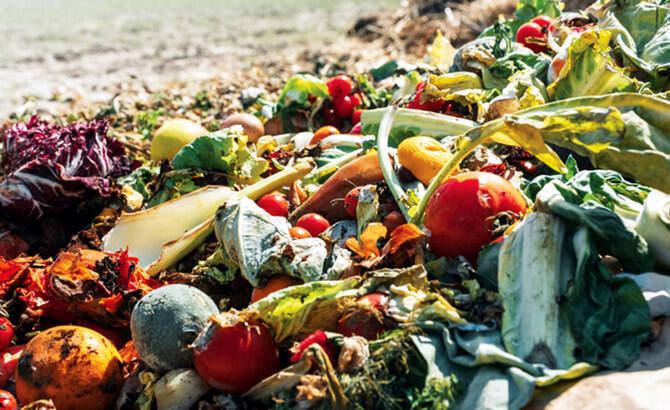
- ARAB NEWS
- 13 Jul 2025

The Gulf states’ booming tourism industries and internationalized economies have drawn people from across the globe in recent years. Combined with a growing citizenry, this movement has led to a regional population of more than 57 million. The opportunity here is that these additional human resources are driving the region’s economic growth. But the challenge is that this growing population is exerting additional pressures on food supply in the region.
Food consumption in the Gulf is expected to rise by approximately 2.8 percent annually to reach 56.2 million tonnes in 2027. Tourism and population growth are the primary drivers. States in the region have attracted record-breaking numbers of tourists in recent years, going beyond traditional destinations like Dubai and Doha to now also include Riyadh and other Gulf cities. The consequent surge in resorts, hotels and innovative culinary experiences have boosted overall food production and consumption.
But tourists alone are not driving this growth. The Gulf population boasts rising disposable incomes and favorable socioeconomic conditions. The lifestyle in high-income societies involves frequent spending on food experiences due to both personal preference and social commitments. Another driver of food consumption is the rapid expansion of the food services and delivery sector, offering the Gulf consumer easy access to diverse cuisines. The growing popularity of food delivery services like Getir, Uber Eats and Deliveroo have transformed how people consume and think about food.
This cosmopolitan population, with its rising wealth and outgoing lifestyle, has ushered in an advanced gastronomical culture in the region. More than 50 percent of the Gulf population is under 25 years of age and this young population is driving the region’s cultural revolution. The increase in food consumption has provided stimulus to various economic sectors and increased imports of essential food products. However, with more food comes more wastage — and the numbers are beginning to alarm policymakers and environmental experts alike.
With more food comes more wastage — and the numbers are beginning to alarm policymakers and environmental experts alike.
Zaid M. Belbagi
On average, food wastage in the Gulf Cooperation Council is approximately 150 kg per person per year, 14 percent higher than the global average of 132 kg. In Saudi Arabia alone, 4 million tonnes of food is wasted annually. This is not just a domestic issue for the region. Food is wasted along the entire supply chain, during import, delivery, storage and in restaurants. As the GCC states rely heavily on imported goods, about 18 million tonnes, or a third of all imported food, ends up in landfill.
But a significant proportion of food wastage takes place at the consumer level. Food is a central element of the Arab culture of hospitality. In Arab homes, there is a tendency toward overpreparation and abundance. Generosity is deeply rooted in the Arab and Islamic cultures and hosts often prepare large quantities of food for guests. This problem is particularly pronounced during Ramadan. In this period, food wastage is even higher, with up to half of prepared food being discarded. Bahrain, for example, produces more than 400 tonnes of food waste daily during Ramadan, while in Saudi Arabia wastage during Ramadan reaches 4,500 tonnes per day.
The irony of the Gulf region’s overreliance on food imports and high levels of food wastage is not missed by anyone.
Zaid M. Belbagi
As people in the region are increasingly entering the public sphere, the Gulf is also seeing a surge in dining-out culture. Full-service restaurants held 47 percent of the market share in 2024. This translates into high levels of daily food production, often exceeding the actual demand. In the UAE, 38 percent of food in the hospitality sector is wasted. The growing popularity of buffets, particularly prevalent in luxury hotels and resorts, has contributed significantly to this challenge, with large amounts of freshly prepared food discarded each day.
The irony of overreliance on food imports and high levels of food wastage is not missed by anyone. Economically, high wastage increases the burden on national budgets due to the high cost of food imports and waste management. As an example, food waste in the UAE costs the country more than $3.5 billion annually. In addition, the environmental impact of this exercise is alarming. Wasted food means wasted water, energy, transportation and plastic packaging, all of which contribute to avoidable carbon emissions. This is not all. The accumulation of food waste in landfill is also connected to the release of methane into the environment.
The GCC states are racing ahead in sustainability investments, climate change mitigation and addressing the challenges of water scarcity and rising temperatures. Their innovative efforts in developing irrigation systems, water desalination technologies and agricultural systems have received international acclaim. Yet, high food wastage remains a fundamental obstacle to achieving the sustainable development that all Gulf national visions aspire for.
Not only does it undermine the region’s food security, but it also adds to the very environmental challenges that these states are attempting to mitigate. Addressing this issue is vital for conserving resources, reducing emissions and balancing national budgets. Wasted food also means wasted resources and energy while millions in the region starve. This is counterproductive for the narrative of growth and development that defines the region today.